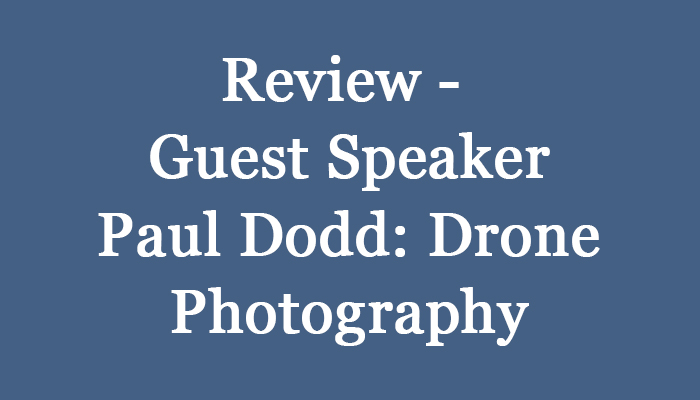Photographers are not only highly skilled technicians we are also creatives. As such, we question and challenge stereotypical depictions of visual reality. Curiosity about the world in which we are immersed demands that we continually work out ways to frame and express our response to it so that we might connect with others and inspire them to share our point of view.
Technology has aided us as we have probed into the intricacies of our earth-bound lives, the underwater worlds of our planet and the dominions of air and space.
The drone entered the world during the Afghan war. Initially, when photographers began to experiment with drones they may have understandably responded to the novelty of capturing images from a birds-eye-view but this is not what photographers like Paul Dodd are about. Paul’s personal images (as opposed to his very competent commercial images) reveal the creative possibilities of where drone photography can take us. His images reveal the underlying spatial and colour patterns found in nature and the built environment while observing “all rules of photography” – leading lines, colour, and composition. “Otherwise it’s just a boring picture”, he said. I would add that clarity of concept is also essential. In this, Paul is a master.
Paul is a competition winner many times over and has a practised eye for knowing what he’s looking for when setting up a photograph. He is able to translate that idea into the image he captures and prompts us to see the familiar in new ways.
In addition to his sophistication as a photographer, Paul possesses an inspirational teacher’s ability to make the complex simple.
At Melbourne Camera Club on Thursday 30 June 2022, Paul presented a talk on drones, drone photography and drone videography. In sharing his own creative work and providing us with an easy-to-follow introduction to drone photography he inspired us to give it a go.
Paul began by defining a drone. He said it is like a helicopter but with four fixed-blade rotors providing a stable aerial platform for a camera.
The camera is mounted on a gimbal which stabilises its movement by continuous adjustments to pitch and horizontal movement. The gimbal also has a remote control so that you can operate the camera while the drone is in flight through your smartphone. Flight and direction are achieved by manipulating the speed of the rotors via a joystick.
Someway into Paul’s presentation, you may find yourself beginning to entertain thoughts of acquiring your own drone. You’re not alone in that!
But we must reign in our enthusiasm with certain technical considerations. Paul cautioned against buying “anything cheap”. You’ll end up “frustrated and disappointed” with the results if you do. Typically $2,500 to $3,500 will get a good drone with a high-resolution camera, good quality stabilisation and reasonable flight range.
Paul owns a DJI Mavic 2 camera drone which has now been superseded by the Mavic 3. These drones are equipped with Hasselblad cameras to facilitate professional-level imaging.
You don’t need to be a CASA-certified drone operator like Paul. Anyone can fly a drone. But like all things in the highly technical world of photography dedicated practice is required. Fortunately, while brushing up on our spacial orientation skills we can rely on the drone’s built-in safety features including proximity detectors and return to base features. But we still need to make judgement calls. For example, we need to calculate how far out you can fly the drone with a tailwind to avoid running out of battery on the way back against a headwind.
Then there are the rules. All drone activity is governed by one federal authority: the Civil Aviation Safety Authority (CASA https://www.casa.gov.au/knowyourdrone/drone-rules). No other body has jurisdiction over the sky. This means that State Governments and local authorities cannot control who can fly a drone and where the drone is flown.
By Helen Lang
The video will available on the Members Video Library page

